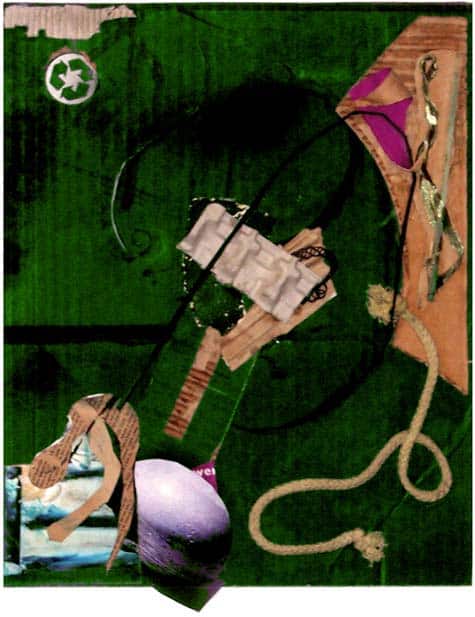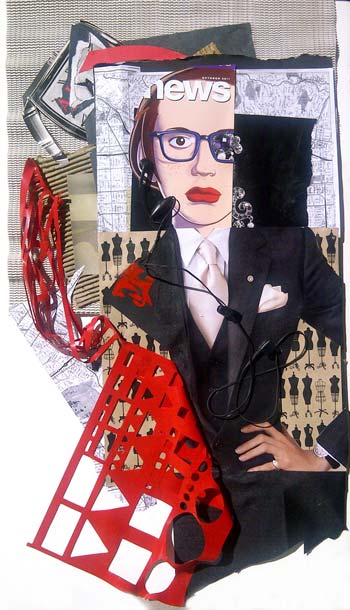by Jennifer L. Pozner
Two months. That’s how long it took for three high school girls to reverse a two-decade blackout of women in one of the most influential journalism jobs in America.
In 1992 when veteran broadcaster Carole Simpson was the last woman to moderate a presidential debate, sophomores Sami Siegel, Emma Axelrod and Elena Tsemberis weren’t even born yet. Shocked when they learned that she had been the last, they initiated a Change.org petition on June 4, demanding that the Commission on Presidential Debates appoint a female moderator this year.

More than 122,000 supporters signed, the blogosphere buzzed, and their campaign generated support from elected officials and coverage in major media outlets as broad-ranging as The Nation, The Christian Science Monitor, TV Guide and CNN. By early August, after mounting public pressure, the Commission on Presidential Debate announced that 2012’s second presidential debate would be moderated by CNN’s Candy Crowley.
A win for women in political journalism, this victory shows the power of a new kind of feminist media activism enabled by savvy use of social media and technology. Yet it represents only one tactic among many needed to achieve media justice.
Those of us examining the role of media in our lives and our body politic need to look hard at the ramifications of deregulating the industry that creates it. Today, just six multinational media conglomerates (Disney, Time Warner, NewsCorp, Viacom, CBS and General Electric) own 90 percent of what we read, watch, hear and see. Action to change the media landscape must include that reality and push against it.
First, time to take a brief look at how we got here and what we need to move forward.
Flashing Back and Forward
When Carole Simpson moderated that debate between Bill Clinton, George Bush and Ross Perot, I was a college freshman studying journalism, media analysis and women’s studies. I was keenly interested in how media shape reality for women and people of color. There was lots of material: inaccurate 1980s news media scapegoated low-income mothers of color as “greedy welfare queens” and “Public Enemy No.1,” enabling the 1990s erosion of the social safety net for poor women and children; an anti-feminist New York Times excerpt of a factually specious book became a years-long trend story attempting to convince the public that date rape doesn’t exist and that rape victims are liars. (Sound familiar?) At 18, I knew I had a long, uphill battle ahead as a burgeoning feminist media critic and media activist.
| Mechanisms have codified media misogyny, bigotry and inaccuracy |
In 1992, there was only one organization monitoring sexism and racism in news media (Fairness & Accuracy In Reporting, (guided by Laura Flanders and Janine Jackson). Only a handful of scholars and critics, such as Susan Faludi, Molly Ivins and Jean Kilbourne, were analyzing representations of women in entertainment, political media and advertising. Still, in 1992, with Simpson holding real-life politicians accountable to the people just as fictional journalist Murphy Brown was wiping the floor every week with her sitcom’s corrupt execs and politicians, I assumed that women would continue to make progress in media. I had no idea we’d backslide so deeply.
Back then, Roseanne Barr’s eponymous sitcom dismantled the paternalistic Father Knows Best straightjacket of traditional TV womanhood by bringing a plus-sized, blue-collar mom to the small screen, and Thelma and Louise killed a rapist in self-defense during a feminist interpretation of the classic buddy road trip flick. Today, TV is dominated by hyper-thin, fashion-obsessed one percenters on the fictional Gossip Girl and their wealthy, cosmetic surgery-enhanced adult counterparts on the unscripted Real Housewives. When Thelma and Louise sped off that celluloid cliff 20 years ago, did we imagine that, by now, Hollywood would still hire very few women as directors, that male actors would play two thirds of all speaking roles, accompanied by women who tend to be scantily clad? I assumed The New York Times would eventually move beyond their “quota of one” woman on their op-ed page; today, women are still largely marginalized on the nation’s op-ed pages, as hard news reporters, as sources and as subjects in news.
Yet, despite such backlash, we’re also in a golden age of feminist media activism.
Americans now recognize how crucial media are in shaping our self-images, our rights and our economic, political and social spheres. This is a huge culture shift. My first media watch column in 1997 was for the feminist newspaper (remember when those were still being published?) Sojourner: The Women’s Forum; such critique was rare even in the independent press. When I began running the Women’s Desk at FAIR in 1999, feminist media analysis was still exceedingly unusual. Now, every day, you can find it worldwide — in popular mainstream corporate outlets such as Entertainment Weekly and Newsweek/The Daily Beast, in the blogosphere (Feministing, WIMN’s Voices, Crunk Feminist Collective, Racialicious….) and independent print and online magazines (New Moon, Bitch, ColorLines, Rookie, Teen Voices ) joining the still-going-strong Ms., In These Times and, yes, On the Issues Magazine. Miss Representation, a documentary on sexism in the media (disclosure: I was an adviser and featured in the film) was the Oprah Winfrey Network’s most-watched program when it aired last year; pop culture hardly gets more mainstream than Oprah!
Jump Start With Social Media
In 1992, I couldn’t have predicted all the new information, communication and technology tools that women now use to encourage hundreds of thousands of concerned citizens to make a palpable impact on powerful media institutions.
Last year, womenleapt into action when a series of racist anti-abortion billboards went up in New York and Chicago. (In New York’s Soho, a building-size ad featured a photo of a black infant captioned with “The most dangerous place for an African American is in the womb”; in Chicago, a stylized photo of President Obama adorned a billboard reading, “Every twenty-one minutes our next possible leader is aborted.”) Black Women for Reproductive Justice, Chicago Abortion Fund and others wrote op-eds, blogged, filmed YouTube videos, spread the word on Twitter and Facebook, rallied and organized community clean-up and education actions. They got results: the Soho ad was removed, after just a few days. And though it took a little longer longer to oppose the approximately 30 billboards of the same mold that popped up across Chicago’s South and West sides, reproductive justice activist Gaylon Alcarez tells On The Issues Magazine that “I feel good saying that they are down and we ran them out of town.” Similar actions led to victories in Los Angeles.

More recently, 14-year-old SPARK activist Julia Bluhm used social media tools to organize a campaign to pressure Seventeen Magazine not to digitally alter the faces or bodies of teen girls in their pages, and to highlight images of real girls instead. She won‚ and fellow SPARK girls Carina Cruz and Emma Stydahar are following up with a petition demanding the same from Teen Vogue.
When I left FAIR in 2001 to create Women In Media & News, the first national women’s media analysis, education and advocacy group, there was no feminist blogosphere. I built Women in Media & News to help amplify women’s voices in public debate, to provide media literacy for youth and media training for women-led social justice groups, and to situate women as a core constituency for media justice and structural change within the industry.
During the first half of the decade Women in Media & News had little company in the field. Happily, there has been real growth in the sector over the years. Women’s Media Center just launched a live talk-radio show, Women, Action and Media (WAM!) has crowd-funded a direct-action network for gender justice, and the Media Literacy Project has become a leading advocate for youth and community-based media education. Media Matters now regularly calls out sexist TV and radio ads, while groups such as Reel Grrls, People’s Production House and Community Media Centers train girls, people of color and low-income people in media production, enabling marginalized communities to report their own stories.
Taking the Wheel
With all this vibrancy in the field, why have we seen such devolution rather than progress in corporate media content?
There are many facets to that answer, but nearly all of them lead to media policy and corporate interests. In addition to the massive media consolidation I mentioned above, women hold just three percent of “clout titles” in media and telecommunications companies, and women and people of color are similarly underrepresented as corporate media directors and owners. To get where we need to go, feminists must push for heightened awareness of the need for structural change in the regulatory systems that control the distribution, infrastructure and profit models of American print, broadcast and online media. We need a deeper understanding of what that institutional and policy change can and should look like, and we need broad-based buy-in from feminist activists willing to make media justice advocacy equally or nearly as important as their other primary women’s rights concerns.
Luckily, the roadmap to get there is already being implemented by MAG-Net, the Media Justice Grassroots Network, a national coalition led by Malkia Cyril, Betty Yu, Amalia Deloney, DeAnne Cuellar and other visionary women of color. MAG-Net works tirelessly to “transform media and cultural content, conditions, and policies in the service of social justice and human rights, from the ground up.” Its dozens of urban and rural member organizations are working on countless essential goals, including: telecom policy that serves the public interest; indy media production; net neutrality and digital freedom; fair pricing and consumer protections on cell phones and wireless communication technology.
| Women hold just three percent of “clout titles” |
To achieve the truly democratic media landscape we need, those who care about gender and racial justice must seek guidance from and take action in partnership with these bold media justice leaders as much as we do with traditional women’s rights organizations.
With the tacit “No penis, no testicles, no service” sign lifted from the presidential debates, it’s time to think beyond symbolic gains for women in media. We need to look beyond content and past one highly privileged job that recurs every four years — to the mechanisms that support and have codified media misogyny, bigotry and inaccuracy.
Changing those structures may not be as sexy as challenging a sexist magazine or a racist billboard, but it’s the difference between feeding a homeless family at a shelter versus working for public policies that could eradicate homelessness in the first place. The roadmap is out there‚ we just need to drive.
Jennifer L. Pozner is a media critic, public speaker, and the author of Reality Bites Back: The Troubling Truth About Guilty Pleasure TV. She is founder and executive director of Women in Media & News, a media analysis, education and advocacy group; editor of the group blog, WIMN’s Voices, and an adviser for the OWN documentary, Miss Representation.
Also see: Getting Closer to the Levers of Power by Diane Vacca in this edition of On The Issues Magazine
Also see: Broken Politics: Republicans Assail Suffrage Itself by Tanya Melich in this edition of On The Issues Magazine
Read the Cafe for new and updated stories.
